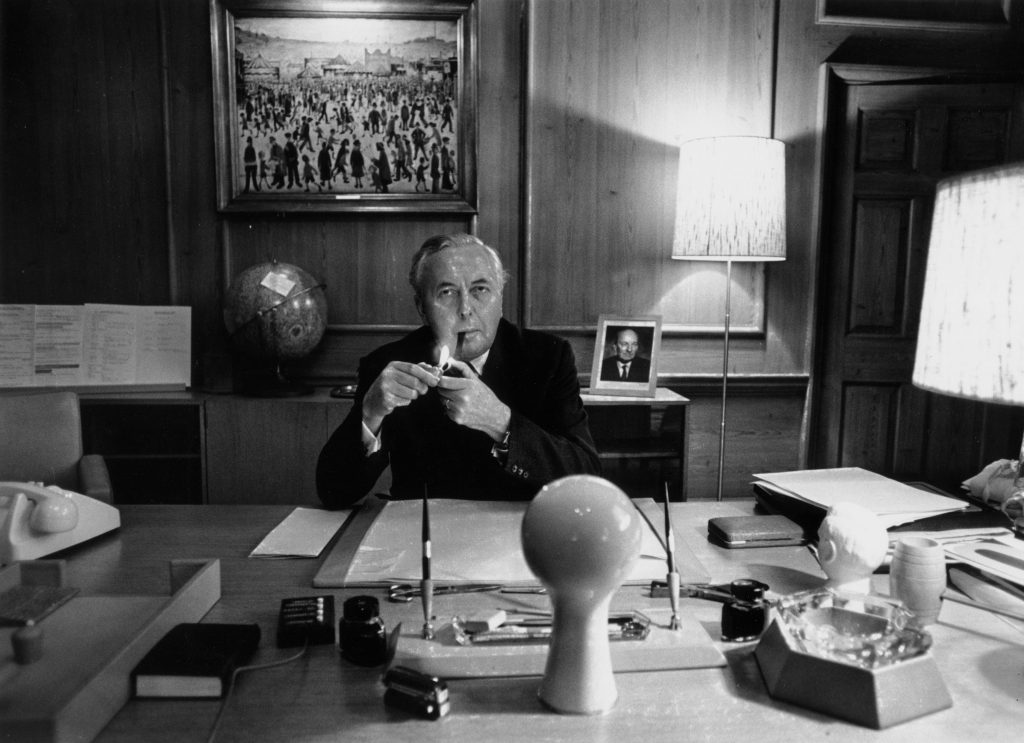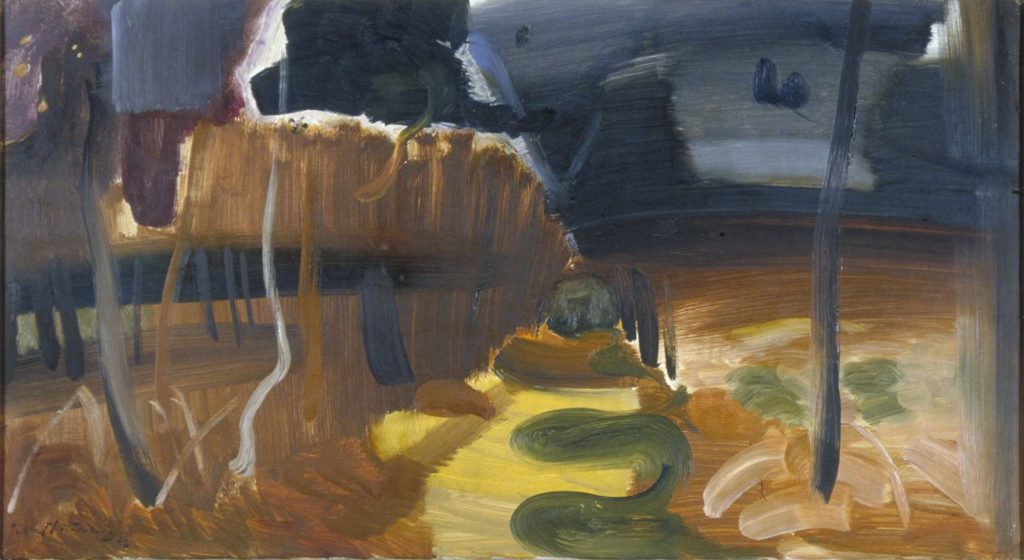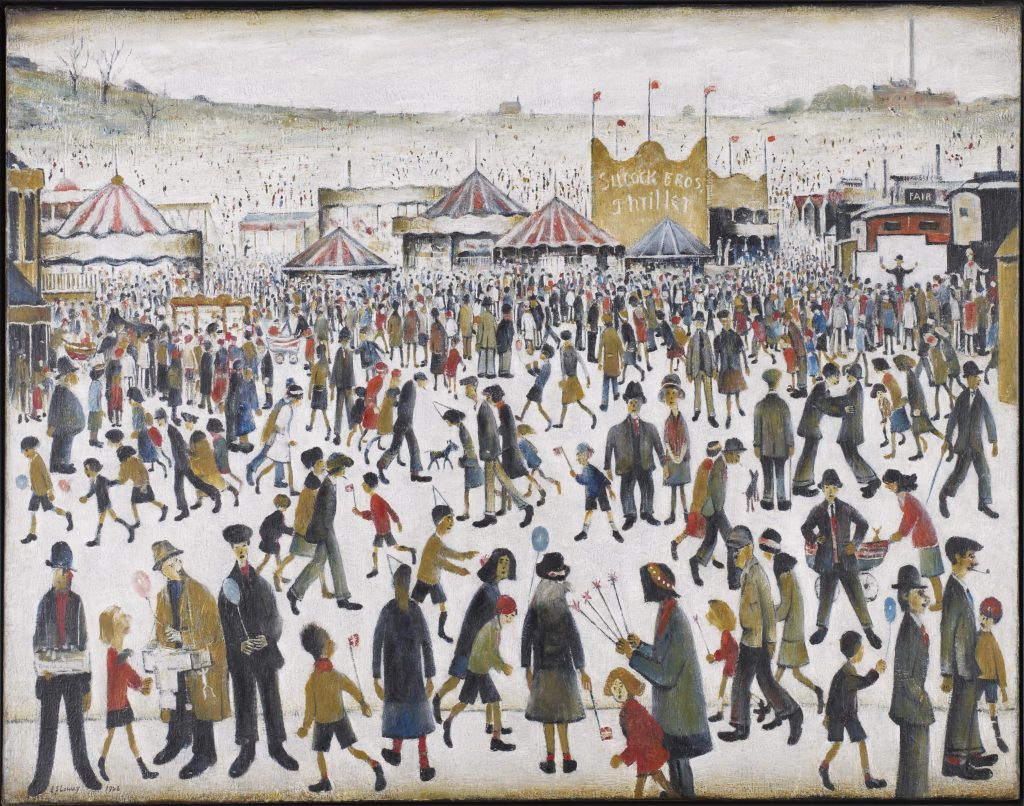Changing art for changing Britain
The mood of post-war Britain is reflected in some of the works that were new to the Collection in that period and displayed in the 1950s and 1960s at 10 Downing Street. A curator was appointed to the Collection in 1946, and attention shifted to the burgeoning contemporary art scene of Britain in those times.

Harold Wilson in his study at 10 Downing Street with Lancashire Fair: Good Friday, Daisy Nook by L.S. Lowry in the background, 1969 © NI Syndication / The Sun – Arthur Steel
Ripe Corn (1947), John Northcote Nash’s pastoral view of the Stour Valley on the Suffolk/Essex border was the first oil painting by a living British artist bought by the Collection. Nash was an Official War Artist during both world conflicts, and his work shows a deep affinity for the British countryside – land the country had recently fought so hard to defend.

John Northcote Nash, Ripe Corn 1946 © Estate of the Artist
Autumn Landscape (1942) by Ivon Hitchens was the first semi-abstract work bought for the Collection. Like Nash, Hitchens was inspired by rural landscape, for him, it was the Sussex countryside where he had relocated to after his London studio was bombed in 1940.

Ivon Hitchens, Autumn Landscape, 1942 © Estate of the Artist
In 1946, the Ministry of Works, the government department then managing the Government Art Collection, sought advice from Sir John Rothenstein, Director of the Tate Gallery, on the selection of the Collection’s first curator. That year, Richard Perry Bedford, a sculptor and former curator at the Victoria and Albert Museum, was appointed. A new Picture Committee was revived, represented by the directors of national collections, who steered the Collection’s focus on the burgeoning contemporary British art scene.
Richard Walker took over as curator in 1949, holding the post until 1976. Over these 25 years, the Collection increased from a few hundred to over 8,000 works. Alongside historical and modern works, new works were acquired by young artists like David Hockney and Elisabeth Frink – names that later made their mark on British art.
The Minister of Works in the 1950s, MP David Eccles (later 1st Viscount Eccles), had a canny eye for recognising the cultural value of art in government buildings. In 1952, he launched a public appeal to businesses and private individuals for funds, gifts or loans for government buildings abroad. The response to this novel approach was positive, raising almost £17,000.
The 1960s, a period of intense social and industrial change in Britain, saw an increase in modern and contemporary artworks acquired for the Collection. Under the premiership of Harold Wilson, works by modern British artists including Keith Vaughan and Robert Medley appealed to a broader circle of celebrity guests who attended special events at 10 Downing Street.
Art also reflected new aspirations and interests, perhaps none more so than Wilson’s most personal choice, Lancashire Fair: Good Friday, Daisy Nook (1946) by L.S Lowry. This scene of factory workers at the annual Easter fair replaced an 18th century portrait of ‘first’ Prime Minister, Sir Robert Walpole by Jean-Baptiste Van Loo that had previously hung in the PM’s study.
Lowry’s world is a world Harold Wilson understands, knowing it both from his father’s recollections and from his own vivid childhood memories.
Marcia Williams (later Baroness Falkender), Wilson’s Private Secretary.

Laurence Stephen Lowry, Lancashire Fair: Good Friday, Daisy Nook, 1946 / © The Estate of L.S. Lowry. All Rights Reserved, DACS 2022